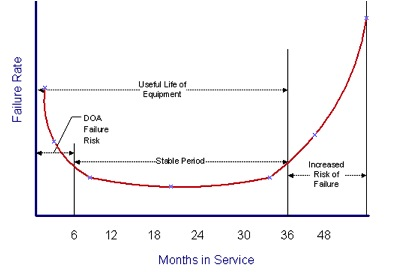IT Technology Lifecycle Management for Small Business
 Those who know me know I believe that business requirements drive technology investments (not the other way around). So let’s assume everyone agrees with me on that, but what about managing existing technology investments? A few of the more common technology management scenarios we see in small businesses include:
Those who know me know I believe that business requirements drive technology investments (not the other way around). So let’s assume everyone agrees with me on that, but what about managing existing technology investments? A few of the more common technology management scenarios we see in small businesses include:
-
Upgrading when the existing technology literally fails and becomes unusable
-
When a visiting engineer tells you, “Houston, we’ve got a problem”
-
When introducing a new business application, the vendor “requires” new equipment
IT managers, or outsourced Managed Service Providers, should always steer management with technology management recommendations proactively. Hardware does get older; new software versions come along; hardware and software even becomes obsolete. Lifecycle management is a subset of technology management and should be reviewed regularly by either internal staff or your outsourced Virtual Chief Information Officer. I utilize a Risk Assessment worksheet to document everything critical to my client’s IT environment from hardware to software, local and remote technology. Some of the considerations, beyond business drivers, include the physical age, performance metrics, end of life, and end of support data for hardware and software.
So, you might ask, “what’s the risk to my small business if I’m not managing and attending to my technology’s lifecycles?” Worst case is you’re exposing the business to unplanned downtime. One of the most common examples is an expiring agreement. Virtually every business has a domain name used for accessing a web site and managing the flow of email. If the registration for your domain name expires, the business is not only at risk of disruption of email flow or access to the web site, but another organization or individual can actually take ownership of your domain name, forcing you to find a new name. Some other expiring agreements associated with lifecycle management include SSL certificates (equally as disruptive as domain names) and both hardware and software maintenance agreements.
Second in line to expiring agreements is dated hardware or software. Let’s start with hardware. In general, my greatest concerns about hardware reliability occurs right after new equipment is deployed and after 3-4 years of its useful life. The graph below provides an illustration of the typical lifecycle of a piece of equipment. During the first 90 days or so, there’s a risk of premature failure. ANP will “burn-in” new equipment for a series of days to try to catch this potential risk. Once through the first 3-6 months, failure rates become quite infrequent. As equipment ages beyond 3-4 years, the risk of a component failure dramatically increases. This risk can be mitigated through effective business continuity planning. We’ll typically leverage redundant components and systems in our designs and discuss the cost/benefit relationship to insure the client is making the most prudent business decision.

The last aspect of technology lifecycle planning is driven by the manufacturers and software developers. It’s referred to as End of Life and End of Support. Many of the major manufacturers publish End of Life documents. I’ve included a few common manufacturer links to their lifecycle web pages. One of the most notable, near term events, is the pending Microsoft Windows XP SP3 End of Support date, April 8, 2014. This means that as of April 8th, Microsoft will no longer provide automatic fixes, updates, online technical assistance or, most importantly, security patches, potentially leaving your business vulnerable to virus attacks or security breaches.
Technology Management Guidelines
Although every businesses situation is different, the following guidelines provide a good rule of thumb:
-
Upgrade desktops every 5-6 years, including upgrading operating systems and the Office suite. For the next upgrade, evaluate the feasibility of thin clients or virtual desktops
-
Upgrade key physical servers every 4 years.
-
If you’ve begin to virtualize servers:
-
Upgrade virtual guest servers based upon the application vendor’s guidelines
-
Configure the virtual host servers “N+1” so you can function if one server fails; stagger purchase dates; monitor performance, then replace upon failure of a host unless performance dictates.
-
- Storage systems should be evaluated at the 5-year mark
- Network switches: At end of support, usually 5 years
- Routers, Firewalls: At the end of software maintenence
In summary, it doesn’t matter whether you’re large or small, driven by technology, or just consider it a necessary evil; you need to have a Technology Lifecycle Management strategy. I’ll leave you with a few guidelines and resources. As always, drop me a note if you’d like to discuss lifecycle strategies, or request a free network assessment to determine where your IT equipment is on the lifecycle graph.
Resources

